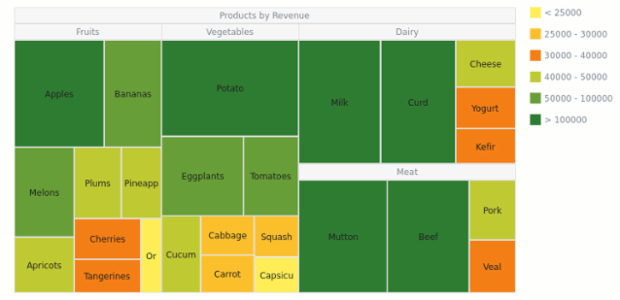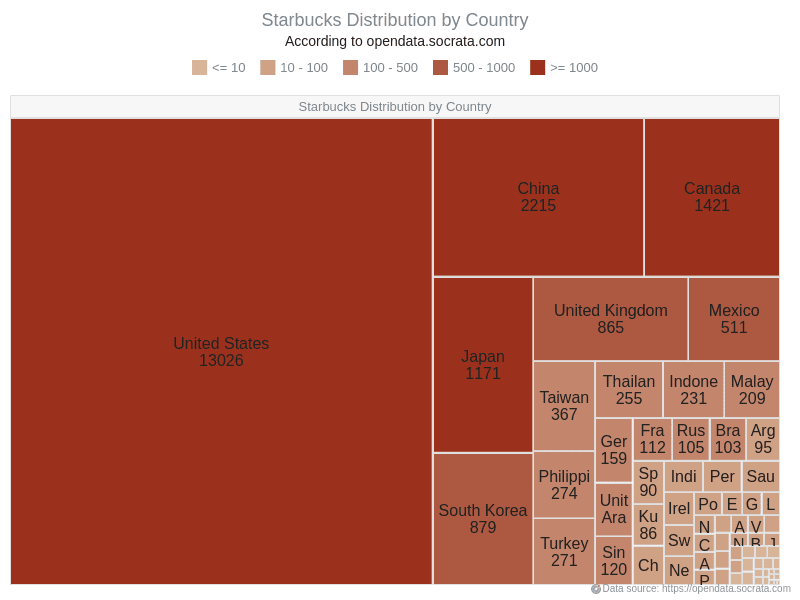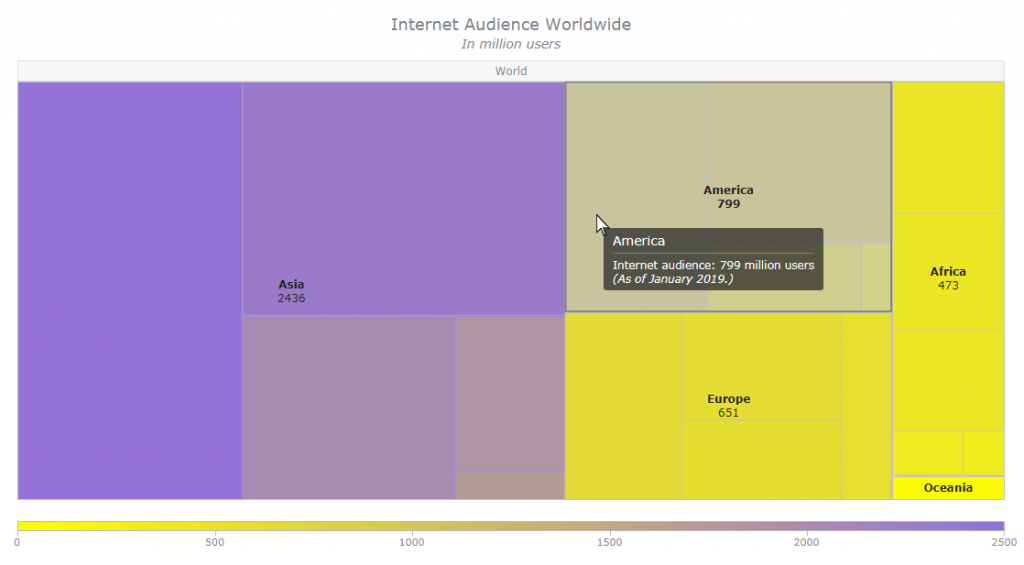

The treemap chart type was invented by professor Ben Shneiderman who has given significant contributions in the field of information design and human-computer interaction. Displaying data by color and proximity, treemaps can easily represent lots of data while making efficient use of space and are great for comparing proportions within hierarchies. Designed to show at a glance the structure of hierarchy along with the value of individual data points, it makes use of nested rectangles whose size is proportional to the corresponding quantities.Įach branch of the tree is a rectangle, and for sub-branches, there are smaller rectangles nested inside them. A treemap chart is a popular technique for visualizing hierarchically organized, tree-structured data.
ANYCHART TREEMAP HOW TO
So, would you like to know how to quickly build a JS-based treemap chart? Follow me in this stepwise tutorial and learn in an easy, fun way!īefore we get down to the tutorial itself, let’s look at the concept of treemaps. Let’s look at that with the help of treemaps! In this tutorial, we will be visualizing the scale of the 10 largest galaxies in the known universe using the treemapping technique. While we are thinking about the odds of the Earth being the only habitable planet in the universe, or not, one of the things we might consider is how big the universe is. And you’re gonna love the illustrations!Īre we alone in the universe? A question every one of us has asked ourselves at some point. I decided to make a step-by-step tutorial explaining how to create awesome interactive treemap charts with ease using JavaScript. If you need to build one but have never done that before, you might think the process is somewhat complicated. Then I’ll show you how to create a cool and colorful interactive visualization like that with JavaScript (and you can do it even if you don’t know it too well).Treemap visualizations are widely used in hierarchical data analysis. I’ll explain what a sunburst chart is and how it works, to start with. So before we get to business, let’s make sure we’re on the same page. This sunburst charting tutorial is mainly for beginners to data science. Here is a sneak peek of the final chart to get you excited:

Scroll down to explore it by yourself and check out the tutorial along the way. My JS sunburst chart provides an overview of the situation as of November 24, 2020, and also shows the global count, continent-wide data, and country-wise proportions for the current active COVID-19 cases and deaths.

And here I am - (1) sharing my interactive sunburst chart of COVID cases and (2) describing how I created it using JavaScript in a matter of minutes, step by step! The process was quick and I thought someone could be interested to learn about how such data visualizations can be built in a pretty straightforward way, even with very little technical skills. So I created a sunburst chart to see at a glance what continents and countries are more (and less) affected by the coronavirus than others. (Stack: jQuery/CodeIgniter/PostgreSQL.)Īlmost recovered from COVID-19 myself these days, I decided to explore how the world is currently doing, during the pandemic. But Rodrigo Gómez Conejo, Head of ICT and Knowledge Management Area at Cesefor, allowed us to let you in and even gave us a brief interview disclosing some peculiar details about the system and how An圜hart is employed - check it out below. Shh, it is still in beta, not yet officially launched. Such a new interesting one demonstrating great use of An圜hart has recently come to our notice and we are happy to let you know about it.Ī Spanish nonprofit, Cesefor used our JavaScript charting library to visualize forestry data for the Spanish region of Castile and León in a whole lot of different charts and maps, aiming to make relevant insights easily accessible and actionable for sustainability.

Some projects, however, deserve a showcase. So it is hardly surprising to come across a graphic powered by An圜hart here or there. Many thousands of developers worldwide use our solutions for interactive data visualization.


 0 kommentar(er)
0 kommentar(er)
